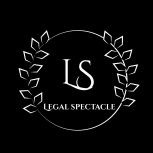Nigerian music label, One Word Global Records Limited, had by way of a motion on notice dated the 27th day of July, 2021, sued Mr Akinbiyi Abiola Ahmed aka Bella Shmurda, a music artiste currently signed to its label. The first relief they sought against Bella Shmurda was an interlocutory injunction “restraining the Respondent either by himself, his representatives or privies, from laying claim to, performing under the name or howsoever interfering with the Applicant’s trademark to the name “Bella Shmurda” pending the hearing or determination of this suit”.
In simple terms, One Word Global Records Ltd was seeking an order from the court preventing Bella Shmurda both from laying claims to his name and performing under said name as they had the trademark rights to the name.
The Black’s Law dictionary defined a trademark as: “A distinctive mark of authenticity, through which the products of particular manufacturers or the vendible commodities of particular merchants may be distinguished from those of others”.
Under Section 5(2) of the Trade Marks Act 1990, using a trademark without the permission of the proprietor of such a mark amounted to infringement.
From the above scenario, it is safe to say that the fact that a person is identified by a particular name, logo or design doesn’t, in any way, give him ownership right to such name, logo or design rather, to secure same, one has to register that name, logo or design. The only way to be assured of full protection over the full use of such a name or mark is by registering same with the Trademarks, Patents and Designs Registry, a department of the Federal Ministry of Industry, Trade and Investment in Nigeria.
It would appear that in Mr Akinbiyi Abiola Ahmed’s case, he had taken for granted the fact that primarily, as the person using the name “Bella Shmurda”, it would have ordinarily been much wiser and safer for him to register the trademark and by implication acquire the ownership rights to the name he professed as his own. His negligence to this fact would appear to be a costly mistake that he most definitely will have to pay for.
It is however pertinent to note that others, today, do not have to fall victim to Mr Akinbiyi’s plight as the steps to registering a trademark is not as complicated as many think. To register a trademark in Nigeria, the following is the laid down procedure under law:
1. Application for Trade Mark:
Prior to such an application, it is advisable that an availability search be carried out at the Trade Mark Registry to ensure that the proposed mark has no similarity with any existing mark. A search report is issued after this process to confirm that said mark bears no similarity to existing marks or designs.
For this to be carried out there is a need to have copies of the proposed logo or mark so that same may be submitted for said search.
After said search is completed, trademark registration commences by way of an online application to the Registrar Trademarks, Patents and Design Registry.
2. Issuance of an Acceptance Letter:
After the trade mark is filed and subsequently examined, its registration may be declined if it is found not to conform to the various conditions set out by the registry, on that note, there may be a need to enforce some changes on the logo or design to ensure compliance with the conditions set aside by the registry. If however the mark is in compliance, a letter of acceptance is issued by the registrar.
3. Publication of Notice:
After the Mark is accepted it is published in the Trademark journal so that anyone who has any cause why same should not be registered may challenge said registration. Oppositions to the registration of trademarks are to be filed within two months of publication.
After an opposition is received, an applicant is expected to respond to same within a month of its receipt.
If however there are no oppositions, or disputes regarding oppositions were resolved in favour of the applicant, the Trademark is then registered and a certificate issued.
It must be noted that a trademark is registered along a particular class or several classes if its owner desires such, however, the more classes a trademark is registered across the more expensive the registration process will be.
The issuance of the Trademark Certificate concludes the process of a Trademark Registration, effectively conferring ownership rights to the registered owner.
While this article intends to give an idea as to the processes of registering a Trademark, it is necessary for all intending applicants to procure the service of an Intellectual property lawyer who has been duly accredited as an agent with the Trademark registry to carry out this procedure.
By Elizabeth Olus Esq.




